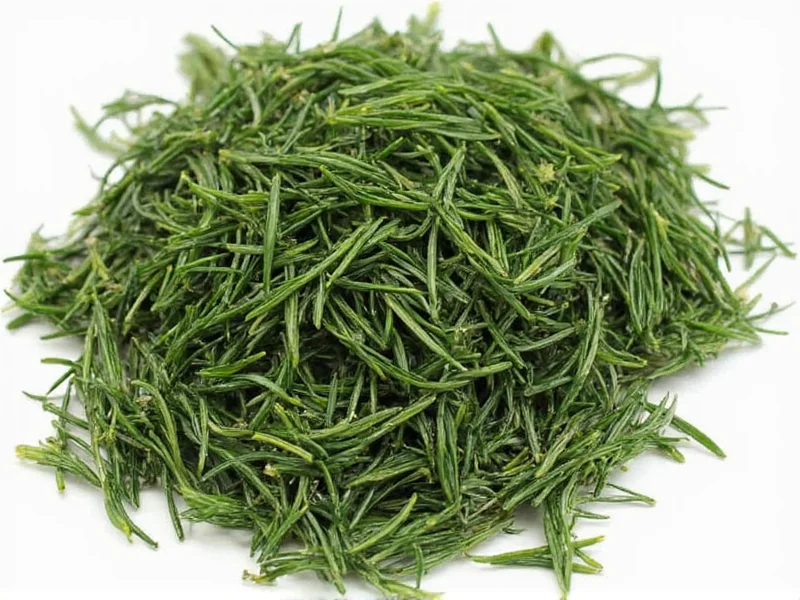When your recipe calls for dried dill but your spice rack comes up empty, knowing effective alternatives can save your culinary creation. Dill's distinctive flavor—slightly sweet with grassy, citrusy notes—plays a crucial role in many dishes from Scandinavian to Mediterranean cuisines. Understanding proper substitution ratios and flavor profiles ensures your recipes maintain their intended character.
Understanding Dried Dill's Flavor Profile
Dried dill offers a more concentrated, earthy version of fresh dill's bright, grassy flavor with subtle anise and citrus undertones. The drying process reduces moisture content by approximately 90%, which concentrates certain compounds while degrading delicate volatile oils responsible for fresh dill's vibrant citrus notes (Penn State Extension, Drying Herbs). This chemical transformation creates a distinctive profile that's essential in dishes like tzatziki, pickles, fish preparations, and potato salads. When seeking dried dill alternatives, consider both flavor compatibility and texture requirements for your specific application.
Top Substitutes for Dried Dill
Fresh Dill
Fresh dill provides the closest flavor match to dried dill, though with brighter, more pronounced citrus notes. Since fresh herbs contain moisture and have less concentrated flavor, you'll need to adjust quantities. This makes fresh dill an excellent choice for dill substitute for salmon recipes or fresh dips where texture matters less.
Dill Weed
Often confused with dried dill, dill weed refers to the dried leaves of the dill plant (while "dill" alone may include seeds). Dill weed has a slightly milder flavor than standard dried dill. When looking for how much dill weed equals dried dill, use a 3:4 ratio—meaning for every 1 teaspoon of dried dill, use 3/4 teaspoon of dill weed.
Tarragon
French tarragon offers the most similar flavor profile among common herbs, with its subtle anise notes mirroring dill's licorice undertones. This makes it particularly effective as a dried dill substitute for fish dishes. Use half the amount of tarragon compared to dried dill, as its flavor is more potent. Note that Russian tarragon lacks the distinctive flavor of French varieties.
Fennel Seeds
Crushed fennel seeds provide a similar licorice note to dill, though with more pronounced sweetness. They work especially well in pickling recipes and hearty stews where dill's grassiness would be less noticeable. For dill substitute in pickling recipes, use 1/4 teaspoon crushed fennel seeds per teaspoon of dried dill.
| Substitute | Ratio (vs 1 tsp dried dill) | Best For | Flavor Notes |
|---|---|---|---|
| Fresh dill | 1 tbsp | Dips, salads, finishing dishes | Brighter, more citrus-forward |
| Dill weed | 3/4 tsp | Most general applications | Slightly milder than standard dried dill |
| Tarragon | 1/2 tsp | Fish, chicken, creamy sauces | More pronounced anise notes |
| Fennel seeds | 1/4 tsp crushed | Pickling, stews, breads | Sweeter, more intense licorice flavor |
| Caraway seeds | 1/4 tsp crushed | Hearty soups, rye breads | Earthier, less citrusy |
Choosing the Right Substitute for Your Recipe
The ideal dried dill replacement depends on your specific culinary application. For substitute dried dill in tzatziki sauce, fresh dill provides the most authentic flavor, though tarragon can work in a pinch. In baked goods like dill bread, fennel seeds create a similar aromatic profile. When making dill pickle substitute without dill, combine fennel seeds with a touch of celery seed for complexity.
However, for traditional dill pickle recipes, the National Center for Home Food Preservation (NCHFP) cautions that dried dill weed (leaves) can cause cloudiness in the brine and recommends using dill seed or dill heads instead (Pickling Guide). Therefore, if substituting for dried dill in pickling contexts, dill seed is the optimal choice, with fennel seeds serving as a secondary option that imparts a sweeter licorice note.
Consider these factors when selecting your substitute:
- Moisture content—fresh herbs add liquid that may affect texture
- Flavor intensity—some substitutes are stronger than others
- Heat tolerance—add delicate substitutes like fresh dill at the end of cooking
- Visual appearance—chopped fresh dill provides green flecks that dried dill lacks
Adjusting Recipes When Substituting
When replacing dried dill, consider making these adjustments to maintain balance:
- Add a squeeze of lemon juice when using tarragon to mimic dill's citrus notes
- Reduce other strong flavors slightly when using fennel seeds
- For how to substitute dried dill in potato salad, add a pinch of celery seed with your substitute for complexity
- When using fresh dill as a substitute, add it during the last 5 minutes of cooking to preserve flavor
Storage Considerations for Substitutes
Unlike dried dill which maintains potency for 1-2 years when stored properly, many substitutes have different shelf lives. Fresh dill lasts only 7-10 days refrigerated, while tarragon and fennel seeds retain quality for 1-2 years in airtight containers away from light. For long-term storage solutions when seeking best dried dill alternative for pantry, dried tarragon or fennel seeds provide the most stable options.
Avoiding Common Substitution Mistakes
Chefs often make these errors when substituting for dried dill:
- Using equal amounts of fresh and dried herbs (remember the 3:1 ratio)
- Adding delicate substitutes too early in the cooking process
- Not adjusting other seasonings to compensate for flavor differences
- Using Russian tarragon instead of French variety for dill substitution
- Overcompensating with stronger substitutes like fennel seeds











 浙公网安备
33010002000092号
浙公网安备
33010002000092号 浙B2-20120091-4
浙B2-20120091-4